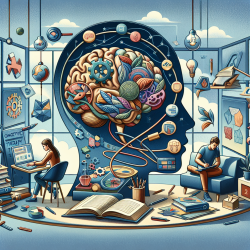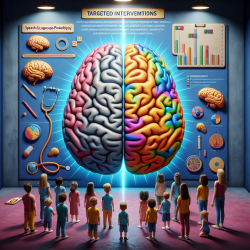Introduction: The Harmony of Language and Music
In the world of autism spectrum disorder (ASD), communication can often feel like a challenging puzzle. However, recent research has revealed a fascinating intersection between language and music that could provide new insights and tools for practitioners. The study titled Language and music phrase boundary processing in Autism Spectrum Disorder: An ERP study explores how individuals with ASD process prosodic phrasing in both language and music, offering a unique perspective on communication challenges and potential therapeutic strategies.
Understanding the Study: Language and Music Processing in ASD
The study delves into the neural mechanisms involved in processing phrase boundaries in language and music, focusing on the event-related brain potential (ERP) known as the Closure Positive Shift (CPS). While neuro-typical individuals show a clear CPS response in both language and music, individuals with ASD exhibit a notable difference: a diminished response in language but a preserved response in music.
This finding highlights a curious dissociation between language and music processing in ASD. Despite impairments in prosodic processing, musical perception remains largely intact. This suggests that while individuals with ASD may struggle with the rhythm and intonation of language, they can still appreciate and process the structure of music.
Implications for Practitioners: Harnessing the Power of Music
For practitioners working with individuals with ASD, these findings open up exciting possibilities for intervention. Here are some practical ways to incorporate these insights into your practice:
- Music Therapy: Utilize music as a tool to engage and enhance communication skills. Since musical processing is preserved, music therapy can be an effective way to build rapport and improve language skills indirectly.
- Prosody Training: Develop activities that focus on the rhythm and melody of speech. Use musical elements like beats and pauses to teach prosodic features, helping individuals with ASD better understand and produce natural speech patterns.
- Collaborative Approaches: Work with music therapists to create integrated programs that combine speech therapy with musical activities, maximizing the strengths of both disciplines.
Encouraging Further Research
While this study provides valuable insights, it also raises questions about the underlying neural mechanisms and how they can be leveraged for therapeutic purposes. Practitioners are encouraged to explore further research in this area to deepen their understanding and refine their approaches.
Conclusion: A Symphony of Possibilities
The intersection of language and music processing in ASD offers a promising avenue for enhancing communication skills. By embracing the unique strengths of individuals with ASD and incorporating music into therapeutic practices, practitioners can create a more harmonious and effective approach to language development.
To read the original research paper, please follow this link: Language and music phrase boundary processing in Autism Spectrum Disorder: An ERP study.










